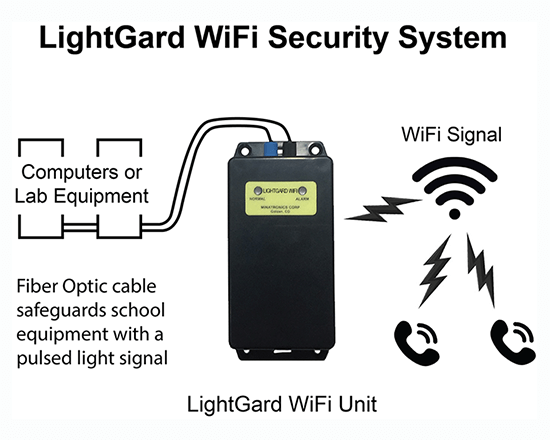How to Integrate a Fiber Optic Security System into Existing Security Setup for Enhanced Protection
How to Integrate a Fiber Optic Security System into Existing Security Setup for Enhanced Protection
Blog Article
Secure Your Residential Or Commercial Property With Trustworthy Fiber Optic Safety Solutions
In an age where safety and security hazards are progressively sophisticated, the need for efficient protection solutions is paramount. Fiber optic security systems stand out by supplying exceptional dependability and efficiency, leveraging advanced light transmission modern technology to improve surveillance capabilities. security fibers. Comprehending the complexities of fiber optic protection can illuminate the path to guarding your property a lot more efficiently.
Advantages of Fiber Optic Safety
Fiber optic security options offer a variety of advantages that make them significantly important in today's electronic landscape. Among the most substantial advantages is their exceptional bandwidth capacity, which enables the transmission of huge quantities of data over long ranges without significant signal destruction. This capacity is particularly useful for protection systems that depend on high-definition video clip monitoring and real-time surveillance.
Furthermore, fiber optic wires are inherently more protected than conventional copper wiring. They are unsusceptible to electro-magnetic disturbance, making them much less at risk to hacking or eavesdropping. This enhanced protection is vital for shielding sensitive information and preserving the stability of monitoring systems.
In addition, optical fiber are more resilient and resistant to environmental factors, such as dampness and temperature fluctuations, making sure long-lasting reliability and decreased maintenance prices. The light-weight nature of fiber optic wires also simplifies setup processes, permitting better flexibility in system layout.
How Fiber Optic Equipment Work
In contemporary safety and security applications, the procedure of fiber optic systems counts on the principles of light transmission through flexible glass or plastic fibers. These fibers are made to bring light signals over cross countries with marginal loss, making them perfect for sending information associated with security monitoring. The core of the fiber, bordered by a cladding product, ensures that light signals remain had within the core through a sensation called overall interior reflection.
When incorporated right into safety systems, fiber optic cable televisions can transmit data from various sensors, such as cams, motion detectors, and alarms, to a central surveillance station. The high bandwidth capability of fiber optics enables the transmission of big amounts of data all at once, making it possible for real-time surveillance and prompt reaction to possible hazards.

Kinds Of Fiber Optic Safety Solutions
Various sorts of fiber optic protection services have arised to enhance surveillance and protection throughout various environments. One popular service is fiber optic border invasion discovery systems (PIDS), developed to check and secure building limits Get More Info with the discovery of resonances and disruptions along fiber optic cords. These systems provide real-time alerts, allowing punctual reactions to unauthorized accessibility efforts.
One more reliable option is fiber optic video security. This innovation leverages high-definition cams attached via fiber optic cords to transmit video data over lengthy ranges without considerable loss of quality. This configuration is particularly helpful in large locations, such as airport terminals and industrial websites, where conventional copper cable televisions might falter.
Additionally, fiber optic sensors are significantly made use of for ecological monitoring, identifying modifications in temperature, description stress, or acoustic signals that can suggest safety breaches or unsafe problems. These sensors supply high sensitivity and accuracy, making them suitable for vital infrastructure defense.

Installation and Maintenance Tips
Reliable installment and maintenance of fiber optic safety and security remedies are important for guaranteeing their optimal performance and durability. Fiber optic cable televisions need to be routed safely, avoiding sharp bends or spins that might endanger their stability.
Throughout installment, it is a good idea to perform comprehensive testing of the system to validate that all elements are functioning properly. Regular maintenance checks need to be scheduled to check the fiber optic cords for any signs of wear or damages, in addition to to guarantee that connections stay protected. Cleaning the adapters periodically is also crucial to avoid signal loss because of dust or debris.
Additionally, keeping an updated inventory of mounted parts and their requirements can assist in simpler troubleshooting and upgrades. By adhering to these setup and upkeep ideas, homeowner can maximize the effectiveness of their fiber optic safety options, ensuring a trusted defense against possible dangers.
Comparing Prices and Performance
When assessing fiber optic protection options, understanding the equilibrium between expenses and effectiveness ends check it out up being vital (security fibers). Organizations should consider the upfront financial investment, continuous upkeep costs, and the long-term value these systems give. While fiber optic systems might call for a higher initial installment cost contrasted to conventional copper wiring, their durability and decreased susceptibility to electro-magnetic disturbance typically translate to lower maintenance costs with time
Efficiency is another important factor; fiber optic protection systems supply improved data transmission rates and improved integrity. They can cover bigger ranges without signal degradation, making them suitable for extensive buildings or remote places. The high data transfer capability sustains sophisticated protection applications, such as high-definition video monitoring and real-time tracking, which are essential for comprehensive safety and security administration.
Ultimately, the choice between expense and effectiveness should be guided by particular security requirements and risk evaluations. Organizations must examine their distinct needs, thinking about variables like home size, safety and security threats, and technical improvements. By carrying out a thorough cost-benefit analysis, stakeholders can make educated decisions that align with their safety and security objectives while guaranteeing a sound investment in fiber optic modern technology.
Verdict
Finally, fiber optic safety and security options offer significant benefits in terms of performance, reliability, and immunity to environmental disturbances. These systems enhance surveillance capabilities and border protection, making them an effective choice for detailed protection. Initial setup prices may be higher, the lasting advantages, including decreased upkeep and exceptional functionality, warrant the investment. Ultimately, the fostering of fiber optic modern technology stands for a forward-thinking approach to securing residential properties versus evolving safety and security risks.
Report this page